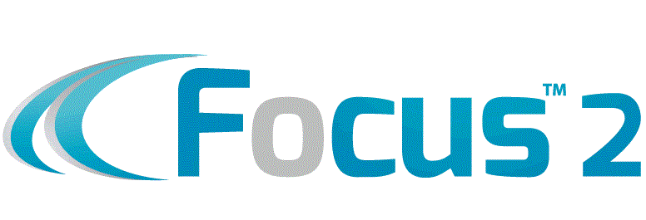New FAFSA Changes for October 2016
New FAFSA changes for October 2016 will impact the 2017-2018 school year.
There are two exciting changes coming to the Free Application for Federal Student Aid(FAFSA®) process this year.
- The 2017–18 FAFSA will be available earlier.
You can file your 2017–18 FAFSA as early as Oct. 1, 2016, rather than beginning on Jan. 1, 2017. The earlier submission date will be a permanent change, enabling you to complete and submit a FAFSA as early as October 1 every year.
- You’ll use earlier income and tax information.
Beginning with the 2017–18 FAFSA, you’ll be required to report income and tax info from an earlier tax year. For example, on the 2017–18 FAFSA, you—and your parent(s), as appropriate—will report your 2015 income and tax info, rather than your 2016 income and tax info.
We understand that some families’ income may have changed significantly since the 2015 tax year. If this is the case for you, you must complete the FAFSA with the info it asks for (2015). Then, after filing your FAFSA, contact the financial aid office at your school to explain your situation. The school has the ability to assess your situation and make adjustments to your FAFSA.
The following table provides a summary of key dates as we transition to using the early FAFSA submission timeframe and earlier tax information.
| When a Student Is Attending College (School Year) | When a Student Can Submit a FAFSA | Which Year’s Income Tax Information Is Required |
| July 1, 2015–June 30, 2016 | January 1, 2015–June 30, 2016 | 2014 |
| July 1, 2016–June 30, 2017 | January 1, 2016–June 30, 2017 | 2015 |
| July 1, 2017–June 30, 2018 | October 1, 2016–June 30, 2018 | 2015 |
| July 1, 2018–June 30, 2019 | October 1, 2017–June 30, 2019 | 2016 |
We know you probably have some questions. Here are some we’ve been hearing from students:
How will the changes benefit me?
You might find that the FAFSA process is easier than you expected.
- From now on, the FAFSA will ask for older income and tax information that you will already have. This change means you won’t have to use estimates anymore, or log in later to update your FAFSA after you file taxes!
- Because you’ll already have done your 2015 taxes by the time you fill out your 2017–18 FAFSA, you may be able to use the IRS Data Retrieval Tool (IRS DRT) to automatically import your tax information into your FAFSA.
- Having the FAFSA available three months earlier will give you more time to meet most deadlines (although some will be early, so fill out the FAFSA right away just in case) and to explore and understand your financial aid options.
Since the 2017–18 FAFSA asks for the same tax and income information as the 2016–17 FAFSA, will my 2016–17 FAFSA info automatically be carried over into my 2017–18 renewal FAFSA?
No. Too much could have changed since you filed your last FAFSA, and there’s no way to predict what might be different, so you’ll need to enter the information again. However, keep in mind that many people are eligible to use the IRS Data Retrieval Tool to automatically import their 2015 tax information into the FAFSA, making the process of reporting tax info quick and easy.
Do I have to update my 2017–18 FAFSA with my 2016 tax information after I file my 2016 taxes?
No. The 2017–18 FAFSA asks for 2015 tax info, and only 2015. Beginning October 1, you can fully submit the FAFSA in one sitting using your 2015 tax info. No updating necessary. (Hooray!)
But what if my family’s financial situation has changed since our 2015 taxes were filed? Can we report our 2016 tax information instead?
No. You must report your 2015 tax info on the 2017–18 FAFSA. You do not have the option to report your 2016 tax info. If your family has experienced a loss of income since the 2015 tax year, talk to the financial aid office at your school. They have the ability to assess your situation and make adjustments.
Note: The FAFSA asks for marital status as of the day you fill it out. So if you’re married now but weren’t in 2015 (and therefore didn’t file taxes as married), you’ll need to add your spouse’s income to your FAFSA.
Similarly, if you filed your 2015 taxes as married but you’re no longer married when you fill out the FAFSA, you’ll need to subtract your spouse’s income.
Since I’m required to report my 2015 tax information, do I also answer all the other questions on the FAFSA using information from 2015?
Will FAFSA deadlines be earlier since the application is launching earlier?
We expect that most state and school deadlines will remain approximately the same as in 2016–17. However, several states that offer first come, first served financial aid will change their deadlines from “as soon as possible after January 1” to “as soon as possible after October 1.” So, as always, it’s important that you check your state and school deadlines so that you don’t miss out on any aid. State deadlines are on fafsa.gov; school deadlines are on schools’ websites.
Can I fill out the FAFSA before I submit my college applications?
Yes, you can fill out the FAFSA even before you’ve submitted your college applications. Add every school you’re considering to your FAFSA, even if you haven’t applied or been accepted yet. Even if you’re on the fence about applying to a particular school, add it. It will hold your place in line for financial aid in case you end up applying for admission at that school. You can always remove schools later if you decide not to apply (but you don’t have to).
Will I receive aid offers earlier if I apply earlier?
Not necessarily; some schools will make offers earlier while others won’t. If you’re applying to multiple schools or thinking of transferring to another school, you might want to look at the College Scorecard to compare costs at different schools while you wait for your aid offers to arrive. Note: You should be aware that the maximum Federal Pell Grant for 2017–18 might not be known until early 2017, so keep in mind that even if you do receive an aid offer early, it could change due to various factors.
Where can I get more information about—and help with—the FAFSA?
Visit StudentAid.gov/fafsa/filling-out; and remember, as you fill out your FAFSA atfafsa.gov, you can refer to help text for every question and (during certain times of day) chat online with a customer service representative.
Also get professional help with these financail aid forms at AZCollegePlanning.com, give us a call.





